THE SUPER MARIO BROS MOVIE: It’s-A Meh Movie!
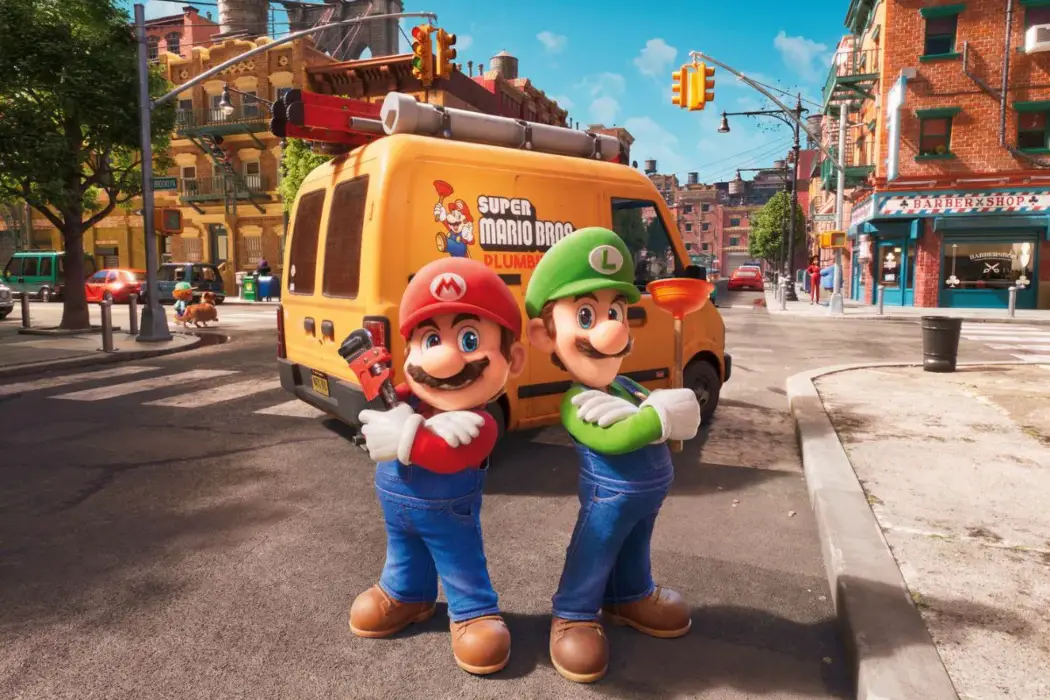
A former video store clerk, Mark has been writing about…
The most positive praise that can be bestowed on The Super Mario Bros Movie is that it’s not as bad as 1993’s Super Mario Bros. Unless this film was an unfocussed mess of plotlines and motivations, it’s a better picture almost by default. The Illumination Animation studio doesn’t screw around when it comes to developing animated movies aimed to please general audiences. They also don’t add much flair to make them stand out amid the tougher competition of Pixar and Dreamworks. Whereas other animated studios always felt like they were developing complete stories, Illumination’s features always felt like a patchwork of funny vignettes that rarely culminate all that well.
The Super Mario Bros Movie is not that much different. It tries to find many fun things to do with the Mario franchise, coats it with frenetic animated slapstick sequences, plops on a jukebox soundtrack, and unleashes an onslaught of pop-culture references. I can only assume many Nintendo fans will be too busy counting all the citations to various Mario games to notice how little the characters are explored in this overstuffed lost-world fantasy crammed into 90 minutes.
Mario’s Many Mini Arcs
The characters have compelling setups but need more room to advance their plight and personality. Mario (Chris Pratt) has two prime dilemmas amid his plumbing business. He feels responsible for protecting his brother Luigi (Charlie Day), who places too much faith in his never-gives-up brother. There’s also a point of family pride in how Mario wants to prove his dreams are worth pursuing to his scrutinizing family.
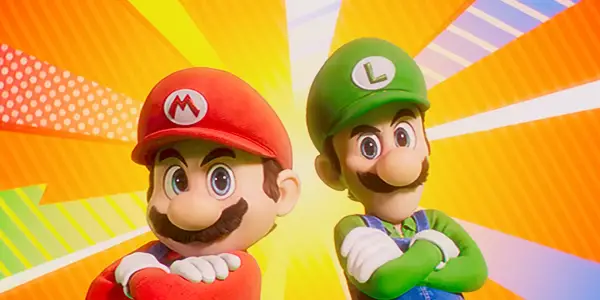
Had the film been primarily about these concerns, it might’ve made for an enticing adventure. The problem is that once the story progresses to the magical land of the Mushroom Kingdom, we’re assaulted with even more characters who all have different motivations and lack arcs for them. Even though he seems more content playing music, the evil Bowser (Jack Black) wants to rule kingdoms and marry Princess Peach (Anya Taylor-Joy). As for Peach, she has her own origin story that is brought up once and never spoken of again as she focuses all her attention on making sure her mushroom subjects don’t become pizza toppings.
The nemesis Donkey Kong (Seth Rogen) has so little to work with that it’s surprising he has issues to overcome with his cranky dad (Fred Armisen). But with so little time spent with this character, Donkey Kong honestly comes off more like Seth Rogen, complete with his trademark laugh. So many characters fight for the screen that it’s no wonder Toad (Keegan-Michael Key) is reduced to just being a brave and devoted mushroom with no real reason given for such undying allegiance.
Lavish Levels
As far as the animation goes, the many fantastical worlds look nice. Every island has personality and style, from Bowser’s Badlands to Kong Island. The Mushroom Kingdom has an elaborate cityscape of pipes, shops, and many anthropomorphic mushrooms milling about every corner.
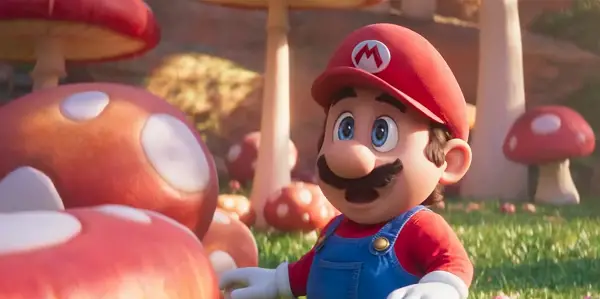
Compared to films like Sonic, which offered empty fantasy worlds loaded with a lot of nothing, it was refreshing to see a video game movie place so much care into the setting.
And, yet, so many of these locations are explicitly built to play out like video games. Even the opening scenes in Brooklyn are framed by the side-scrolling platform view to remind the viewer of the games constantly. To the film’s credit, if you keep the audience locked into this platformer set-piece assembly, they might as well look good. As much as Kong Island’s road system appears over-the-top, it makes for a fun ride with the characters zooming about it on go-karts.
Mamma Mia, the References!
Though the fantasy elements are well presented, so much of the film feels reliant on its references to Nintendo. Within the first three minutes of introducing the Mario Bros, the film packs in the theme of The Super Mario Bros Super Show, the Gamecube start-up music, a reference to Wrecking Crew, and a cameo by Charles Martinet, the original voice of Mario.
While there’s nothing wrong with peppering a picture like this with Nintendo’s bountiful treasure trove of IPs, the truckloads of citations become exhaustive, especially when the film keeps shoving them in your face. Don’t worry about looking for Diddy Kong in the crowd of Kongs during the big arena sequence; he’ll be called out by name and occupy the frame. Don’t, however, expect Diddy Kong to do anything genuinely funny. Like so many video game movies before it, this one dollops its visuals with pop-culture identities meant to be more exciting for their presence than their purpose. Watching Diddy Kong being recognized in the movie is about as exciting as seeing the electronic billboard for Coke in Blade Runner.
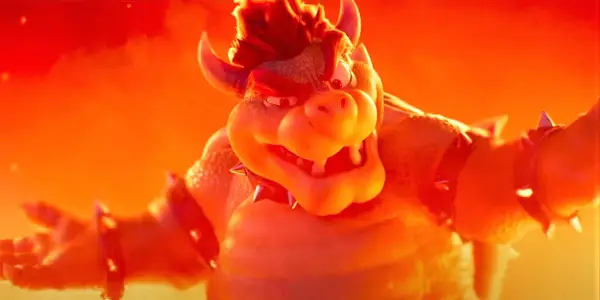
Easy Mode Fantasy
Throughout the picture, there’s this tone about treating every inch of this Mario adventure with delicacy. Not so much a sensitivity to ensuring a good film will be made but more like wrapping every element in plastic wrap so it won’t break. After all, nobody wants another 1993’s Super Mario Bros movie, right?
This careful nature results in a film that plays it far too safe with its fantasy adventure. There’s a cohesive plot, a well-defined world, and stylish action moments. But rarely does the film feel like it finds a groove where it can have all the fun with a Mario movie. More of the mechanics of video games feel like they’re given a playfulness than anything else that could be staged humorously. And while it was silly to watch a Mario death “Game Over” montage, there’s only so much comedy that can be evoked from such a standard slapstick.
It’s Still An Illumination Movie
Although this film stands out as one of the better films to come out of Illumination, it’s still bound by all of the studio’s lukewarm hallmarks. Despite the film featuring many orchestral renditions of all the familiar Mario music, the jukebox is fired up for much of the action-based scenes. Guess which popular music was used for Mario’s training montage, and you’ll probably be right.
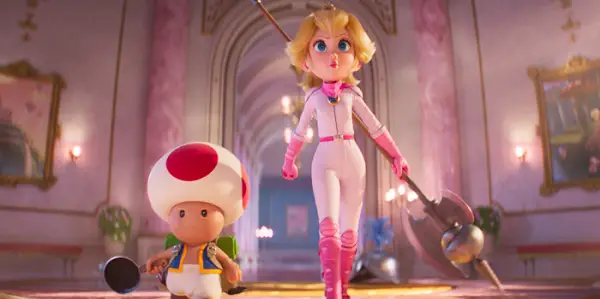
The other problem with Illumination’s films is that they always feel like more of a series of set pieces that overshadow most of the script. This film succumbs to the same difficulties, resulting in character arcs that are either treated like bookends or fall off the map amid all the fast-paced action. This makes the film all the more frustrating, considering it works in bits and pieces, but doesn’t come together by the end, at least in terms of developing its ensemble.
Conclusion: The Super Mario Bros Movie
Mario’s animated movie debut is too safe and passive, more content with referencing its source material than playing with it. I kept waiting for the film to take off and find that special power-up to make this video game icon shine bright. Sadly, it mostly just gives the Italian plumber the Illumination makeover treatment, dressing the character up in a flashy animated film fit for families, familiar enough for box office success, and routine in its vignettes of good ideas that never amount to a great movie.
If you’re a hardcore Mario and Nintendo fan, I’d probably recommend the film on its surface levels of slathering so much Nintendo product into its animation. But much like Nintendo’s previous commercial movie, The Wizard, there’s only so much Nintendo one can take before the product-placement strings become visibly distracting. Its fans will likely revere it for its passable presentations, bringing the format of platform gaming into movies, and once more breaking the long-debunked myth of the “video game movie curse.” As for everyone else, it’ll likely be another Illumination distraction spruced up in a red hat, blue overalls, and mustache, routinely reminding you that Nintendo exists.
The Super Mario Brothers Movie will be released in theaters on April 5, 2023!
Watch The Super Mario Brothers
Does content like this matter to you?
Become a Member and support film journalism. Unlock access to all of Film Inquiry`s great articles. Join a community of like-minded readers who are passionate about cinema - get access to our private members Network, give back to independent filmmakers, and more.
A former video store clerk, Mark has been writing about film for years and hasn't stopped yet. He studied film and animation in college, where he once set a summer goal to watch every film in the Criterion Collection. Mark has written for numerous online publications and self-published books "Pixels to Premieres: A History of Video Game Movies" and "The Best, Worst, Weird Movies of the 1990s."













